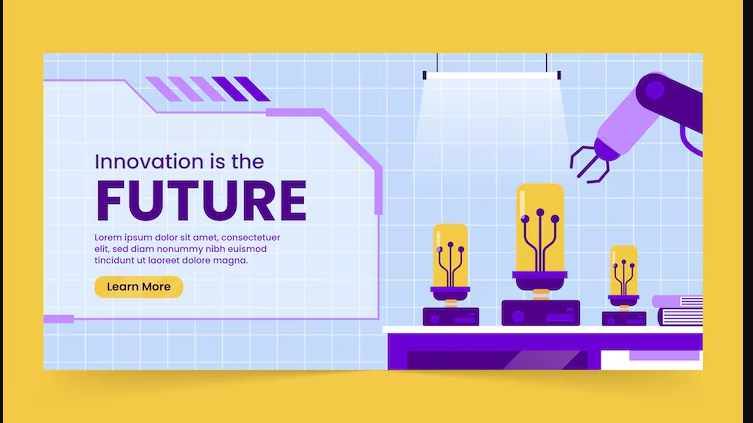Introduction to the Future of Work
The concept of the “Future of Work” refers to the evolving landscape of employment in response to digital advancements. This transformation encompasses how businesses operate, how employees engage, and how technology reshapes job roles. The Future of Work is not merely a trend; it signifies a fundamental shift in the workplace dynamics driven by technology, globalization, and changing societal norms. Understanding this concept is essential for both employers and employees to navigate the ongoing changes in the work environment.
Adapting to technological advances is crucial in today’s fast-paced world. Technologies such as artificial intelligence, automation, and flexible working arrangements are reshaping traditional job roles. Organizations that embrace these innovations can improve efficiency, foster collaboration, and enhance employee satisfaction. Failing to adapt may lead to obsolescence in skills or business models. Therefore, it is vital for individuals and companies alike to recognize the importance of continual learning and adaptation.
Several major trends are currently influencing the workforce landscape. Remote work has become a significant trend, accelerated by recent global events. Additionally, there is a growing emphasis on digital skills, as many roles require proficiency in various technologies. The gig economy is also expanding, allowing for more flexibility in work arrangements. Furthermore, the shift towards sustainability is prompting organizations to rethink their operational practices. These trends must be considered to understand the future trajectory of work and its implications for employees and employers alike.
Regenerate Content
Key Trends Shaping the Workforce
Rise of Remote and Hybrid Work Models
The rise of remote and hybrid work models has transformed the modern workplace. Many companies now offer flexible schedules, allowing employees to balance home and office life. This shift provides benefits like reduced commuting times and improved work-life balance. Companies find that productivity often increases when employees work remotely.
Organizations are also rethinking office space. The traditional cubicle layout is fading. Instead, companies are opting for collaborative spaces that foster teamwork. This trend is not only about location; it’s about redefining how we interact and collaborate within teams. Ultimately, remote work is here to stay, and employers must adapt to this new normal.
Increased Reliance on Automation and AI
Automation and artificial intelligence are becoming integral to various industries. Businesses increasingly use these technologies to enhance efficiency and reduce costs. This trend influences job roles, as routine tasks are automated. Consequently, employees may focus on more strategic and creative work.
The rise of AI also creates new job categories. Roles in AI development and maintenance are in demand. This shift necessitates a workforce that is skilled in technology. Workers must embrace new skills to remain relevant. Continuous learning becomes essential in this evolving landscape, ensuring that employees can adapt to the changes brought by automation.
Regenerate Content
The Role of Technology in Work Environments
Collaboration Tools and Teamwork
In the digital era, collaboration tools have transformed teamwork. Applications like Slack, Microsoft Teams, and Zoom facilitate real-time communication. These tools help teams share ideas and documents instantaneously. Remote work has become the norm, and effective collaboration tools are essential. They allow teams to stay connected, regardless of location. Improved communication leads to increased productivity.
The impact of these tools on teamwork is significant. Teams can now work together seamlessly, bridging geographical gaps. This fosters a culture of collaboration. Employees feel more engaged, as they can contribute effectively. Virtual meetings and shared workspaces enhance interaction. This enables teams to brainstorm and innovate more efficiently. Collaboration tools are now indispensable in modern work environments.
Data Analytics and Decision-Making
Data analytics plays a crucial role in decision-making processes within organizations. Companies leverage analytics to inform strategic choices. They assess market trends, customer behavior, and operational efficiency. By utilizing data, organizations can streamline processes and enhance performance. This leads to more informed decisions that drive success.
Moreover, data analytics fosters a culture of evidence-based decision-making. Teams can analyze performance metrics to evaluate the effectiveness of strategies. Predictive analytics can anticipate future trends. By understanding data better, businesses position themselves to adapt quickly. This agility is vital in today’s fast-paced market. Organizations that embrace data analytics gain a competitive edge, reshaping their operational strategies.
Regenerate Content
Work-Life Balance in the Digital Age
Challenges Posed by Remote Work to Personal Boundaries
Remote work has redefined the boundaries between personal and professional life. Many workers find it difficult to switch off from work. The proximity to work-related tasks at home blurs lines that once protected their personal time. Employees may feel pressure to respond to emails or messages outside of working hours. This can lead to feelings of burnout and decreased productivity over time.
Moreover, the lack of physical separation from the workplace can lead to isolation. Many employees miss the social interactions found in a traditional office setting. This isolation can contribute to mental health issues. Approximately 50% of remote workers report feelings of loneliness. Addressing these challenges requires a mindful approach to maintaining boundaries.
The Significance of Mental Health Awareness
Awareness of mental health is crucial in the digital age. The rise of remote work has highlighted the importance of mental well-being. Employers must prioritize mental health initiatives. This includes resources for stress management and counseling services. A supportive workplace culture can enhance overall employee satisfaction.
Mental health challenges can impact productivity and job performance. Regular check-ins and open communication can mitigate these effects. Employees should feel comfortable discussing their mental health needs. When organizations show they care, it builds trust and encourages a healthier work environment.
Regenerate Content
Implications for Employers and Employees
Changing Expectations in Employer-Employee Relationships
The digital era has reshaped employer-employee relationships. Employees now expect transparency and open communication from their employers. Trust has become a cornerstone of these relationships. Organizations must develop strategies to build trust through regular feedback and engagement.
Moreover, remote work has introduced new dynamics. Employers must adapt to these changes while maintaining productivity. Flexibility is essential in this new landscape. Companies should offer options that accommodate various work styles and preferences. This fosters a culture of respect and understanding.
Flexibility and Adaptability in Job Roles
The need for flexibility and adaptability in job roles is paramount. Job descriptions need to evolve as technology and market demands change. Employees must be prepared to learn new skills continuously. This promotes resilience and innovation within the workforce.
Demographic shifts also impact workplace dynamics. As more generations work together, employers must address diverse perspectives and needs. Strategies for fostering inclusion and diversity become critical. This includes creating environments where all voices are heard and valued. Employers should invest in training programs that promote cultural competency. Future skills required for both employers and employees will include adaptability and collaboration. Skills such as digital literacy and emotional intelligence will be key in navigating this evolving landscape.
Regenerate Content
Conclusion and Looking Ahead
The Future of Work has undergone significant transformations. We explored key facets such as remote work, automation, and the role of technology in reshaping job functions. Adaptation is no longer an option; it is a necessity for both businesses and employees. Understanding these shifts can lead to better strategies for success. Embracing innovation and flexibility becomes essential. Workers must equip themselves with the skills that will be in demand. Companies should foster environments that encourage growth and development.
Proactive adaptation is crucial. Companies must stay ahead of trends to remain competitive. This includes investing in technology and employee training. Workers should also take initiative in their career paths. Lifelong learning and upskilling will help navigate this evolving landscape. By being proactive, both parties can mitigate risks associated with change. The benefits of adaptation outweigh the challenges. It leads to enhanced productivity and job satisfaction.
Envisioning the workplace of the future invites exciting possibilities. Remote work may become a standard practice. Collaboration tools will likely evolve, enhancing team dynamics. Virtual reality could transform meetings and training sessions. Job roles may shift as automation takes over repetitive tasks. This will create opportunities for more creative and strategic positions. Workers need to prepare for these shifts actively. Businesses should prioritize creating an inclusive environment that supports diverse work styles.
In conclusion, the future of work is bright yet complex. Adaptation, innovation, and proactive strategies are key. Businesses and workers must work together to embrace these changes. Let us remain open-minded and committed to growth. The evolving landscape of work encourages excitement and opportunity. By facing challenges together, we can build a resilient future.
Regenerate Content
FAQ
What does the term “Future of Work” refer to in the provided text?
The concept of the “Future of Work” refers to the evolving landscape of employment in response to digital advancements.
Why is adapting to technological advances crucial in today’s fast-paced world according to the text?
Adapting to technological advances is crucial in today’s fast-paced world to stay relevant, avoid obsolescence, and improve efficiency.
What are some major trends currently influencing the workforce landscape as mentioned in the text?
Some major trends influencing the workforce landscape include remote work, emphasis on digital skills, the gig economy, and a shift towards sustainability.
How has remote and hybrid work models transformed the modern workplace according to the text?
Remote and hybrid work models have transformed the modern workplace by offering flexibility, improving work-life balance, and increasing productivity.
What role do collaboration tools play in teamwork in the digital era based on the text?
Collaboration tools in the digital era facilitate real-time communication, enhance teamwork, and improve productivity within teams.
Why is flexibility and adaptability in job roles considered paramount in the text?
Flexibility and adaptability in job roles are considered paramount to promote resilience, innovation, and to address changing technology and market demands.




